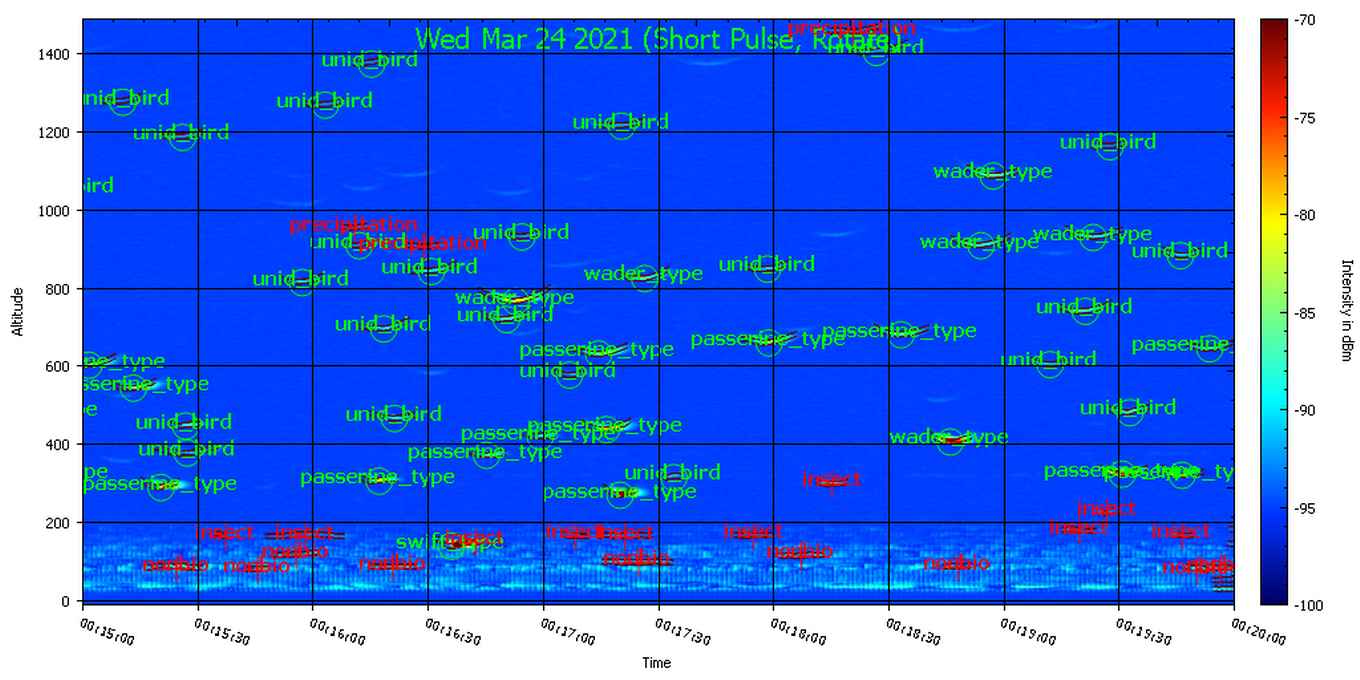Measuring bird migration above ARTIS as part of a demonstration site
26 March 2021

Wednesday,10 March Prof. Judy Shamoun-Baranes, Rotem Kadan-Zilber and Dr Leonardo Porcacchia from the UvA Institute for Biodiversity and Ecosystem Dynamics (IBED) moved a BirdScan radar to the elephant enclosure in ARTIS Zoo. Here, it serves two purposes; it will be used to record bird migration, and it will be used as part of a demonstration site to show visitors of the zoo different systems used for remotely monitoring biodiversity. This way the visitors can learn about several sensors which can be used to measure biodiversity, of which the radar is one. The beautiful spot by the elephant enclosure, next to a path on which many visitors walk, provides the perfect spot to both contribute to the ARISE project and educate the visitors of ARTIS Zoo.
Prof. Judy Shamoun-Baranes, responsible for the BirdScan in ARTIS Zoo and professor of Animal Movement Ecology at IBED, states: ‘I am really excited to start this collaboration with ARTIS Zoo. When my kids were growing up, we were in ARTIS Zoo almost every weekend and I always thought it would be amazing to set up some form of collaboration with ARTIS Zoo and now it’s happening!’ Dr W. Daniel Kissling, scientific project leader of the UvA part of ARISE, says he is also really excited to see the first equipment being installed at our ARISE monitoring demonstration sites. 'With the installation of this radar and other automated sensors such as cameras and sound devices we will have unprecedented opportunities for monitoring biodiversity in the Netherlands', explains Kissling.
Ruben Janssen from ARTIS Zoo says that at ARTIS they are delighted and proud to be one of the ARISE demonstration and monitoring sites. He explains: ‘The ARISE project fits very well with our vision to be an educational meeting place where we bring nature closer and inspire people to better understand, appreciate and treat nature. Biodiversity conservation often seems to be about remote nature reserves, and this is certainly very important, but biodiversity conservation in the Netherlands is at least as important. ARTIS is a large green oasis in the inner city of Amsterdam and therefore a refuge for many local species.’ Ton Hillhorst, from ARTIS Zoo and part of the team who helped move the BirdScan radar, adds this project is the perfect start to expand their urban nature collection.
ARISE
The demonstration site is part of the national ARISE project to set up an infrastructure to identify and monitor all multicellular biodiversity in the Netherlands. The goal is to get an overview of all flora and fauna in the Netherlands within five to ten years. The project is a collaboration of Naturalis Biodiversity Centre, Westerdijk Fungal Biodiversity Institute, University of Amsterdam and University of Twente. It is very exciting that this first site has been created in ARTIS Zoo and that a spot in the elephant enclosure can be used for this project. In the future more types of sensors will be placed in different spots in the Netherlands.
Remote biodiversity monitoring using radar
The BirdScan radar is a radar developed by Swiss Birdradar Solution AG for tracking bird migration. The radar runs continuously and has a rotating vertical pointing recording method, which means that it can detect the altitude, direction and speed of birds 24/7. The BirdScan radar also has an automatic classification system; by the wing beat pattern the radar can determine between bird species groups (passerine, swift, wader, large bird and flocks), insects and bats.

By collecting this information, the BirdScan radar can measure biodiversity. By keeping track of how many and what species of birds migrate both in spring and in autumn, it is possible to measure the increase and decrease in biomass. By researching these seasonal patterns, it can furthermore be investigated whether environmental and anthropogenic conditions influence migration. There is still a lot that can be learned about migration, like: migration timing and intensity, altitudinal distributions and differences between species groups.